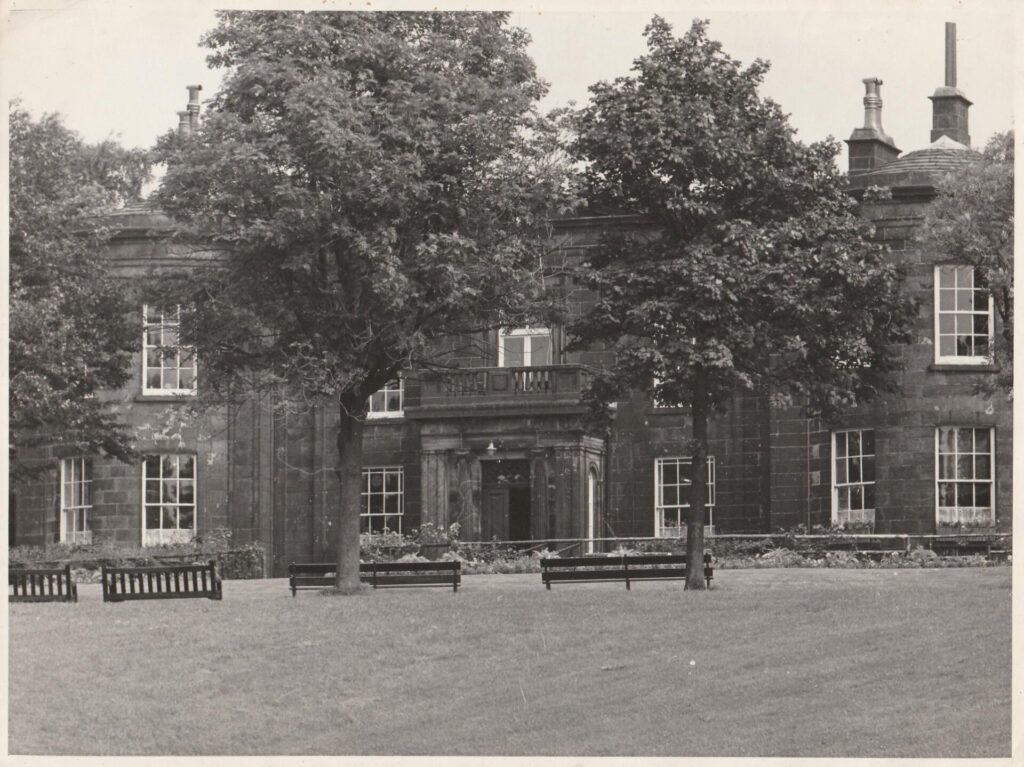About the year 850. A.D. on the site of Stubbylee Hall once stood a beautiful monastery, richly decorated and containing many precious vestments and jewels. Among the jewels was a beautiful chalice of exceptional value. The monks were noted far and wide for their hospitality and kindness, especially to the women and children of the neighbourhood none of whom were ever turned away. About this time, bands of fighting Danes came over to rob and plunder the countryside. One of these bands of Vikings, who worshipped the god Thor, arrived at the Humber in their dragon-headed ships. They were led by Ingvar, a Danish chief, a fine specimen of manhood as he stood in the prow of the boat, fairheaded and blueyed, fearless and brave, yet cruel and merciless to his enemies. Their creed according to their light was that might was right and plunder belonged to those who were strong enough to take it.
Now Ingvar had two beautiful daughters whose mother died giving birth to them. Hela and Brenda, with fair hair and blue eyes like their parents what today we would call platinum blonde. One of these daughters Brenda had disappeared along with an old English nurse some time before. Parents in those days loved their children as they do today and Ingvar grieved sorely for his lost child. On this beautiful August day word was received by the monks that the warlike Danes were near at hand. The old abbot took the precious golden chalice and gave it to a beautiful girl who said, ” I will defend it with my life “. Immediately there were loud cries outside. The girl, clasping the chalice to her bosom, crept into a small opening beneath the altar. The old abbot, knowing all was lost, knelt before the altar in prayer, when in rushed the Danes led by Ingvar. He came to the altar to the hiding place of the jewels. The old abbot, refusing to disclose it prayed to be spared, but Ingvar was merciless and raised his sword to smite. When out of her hiding place came the beautiful girl, to protect the old abbot, with her body and in arresting the blow she was grievously wounded. Ingvar stood petrified as if struck by lightning at the apparition and cried ” Hela my child”, but alas it was not a vision of Hela, but Brenda his long lost daughter, stolen away in revenge by her English nurse, who had found sanctuary in the monastery.
The truth flashed into the giant Danes heart and falling on his knees beside her he cried “It is Brenda, my long lost child”. He took her in his arms, but alas too late. Fixing her eyes on the crucifix she passed away. The Danes, as was their custom, had set fire to the monastery by this time and it was fiercely burning. The old abbot, grasping the chalice, escaped through a secret door, the only one to escape alive. The only one able to relate the death of Brenda and Ingvar dying by her side. After the fire had burnt itself out they found the bodies of Ingvar and his daughter clasped in each other’s arms before the altar. They buried them together in the neighbourhood of Lee Farm. They buried him as one slain in battle, fighting against the Saxons at Broadclough. although the old abbot told another tale. The old abbot was allowed to live and visit Hela to relate to her the tragedy of her father and sister and the whereabouts of their grave. Hela lived long enough to see the day when Dane and Saxon dwelt in peace and amity side by side, to lay the foundation of our modern life and character. No relic at all remains to-day, save only the lonely grave of Ingvar and his daughter Brenda on a mound-shaped hillock near Lee Farm.
